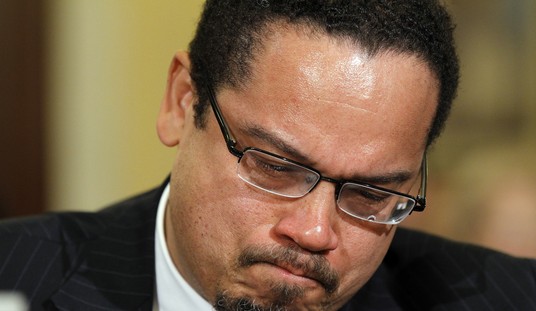When first proposed to taxpayers in 2008, the high-speed rail project in California that would eventually link Los Angeles and San Francisco had a projected cost of $33.6 billion and a delivery date of twelve years. By May of this year, after the Obama administration tossed in $3.5 billion in stimulus money to get the project started, the cost estimate ballooned to $43 billion, the most expensive public-works project in American history. But that now looks like a bargain in contrast to the latest estimate for the bullet train, as reported by the Mercury News:
Faster than a speeding bullet train, the cost of the state’s massive high-speed rail project has zoomed to nearly $100 billion — triple the estimate given to voters and more than enough to run the entire state government for a year.
What’s more, bullet trains won’t be up and running until at least 2033, much later than the original estimate of 2020, although that depends on the state finding the remaining 90 percent of the funds needed to complete the plan.
The new figures come from a final business plan to be unveiled by the California High-Speed Rail Authority on Tuesday, though some of the details were leaked to the media, including this newspaper, on Monday. Officials at the rail authority did not respond to repeated requests for comment Monday.
Gov. Jerry Brown on Tuesday was expected to endorse the long-awaited plan, the first major update to the project in two years and the last before the federal deadline to begin construction next year. But state legislators, who were already skeptical, will tear through the plan starting Tuesday before deciding whether to start building, or to kill the project.
California has an annual budget of $86 billion this year, which the new estimate exceeds — and they can’t even find the money to fund that. How will California find the cash to fund their bullet train? No one is really sure, although the Mercury News that it will “largely come from borrowing more” in a state whose credit rating is already beleaguered by their current debt and recurring budget crises.
But the need to move people between the two cities is so great that it justifies the investment — right? Not at all. In an earlier column for The Week, I pointed out that the fixed-rail service duplicates a wide range of options for air flight between the two cities, with little cost to taxpayers and competitive rates for consumers:
California’s high-speed rail project has lots of problems, but its most basic is purpose. The project proposes to connect Los Angeles and San Francisco with an express train that will take two hours and 40 minutes from beginning to end. That sounds good in comparison to the drive, which is approximately six-and-a-half hours, when there is no traffic, or by existing Amtrak service, which takes almost 10 hours to go from Union Station to Moscone Center — and uses two buses.
In contrast, passengers have plenty of choices for direct transportation between the two major metropolitan areas via commercial airlines. Not only does the airline ticket price on Travelocity come in at only a little more than subsidized Amtrak fares for a round trip ($138 as compared to $112), it takes less than half of the time to travel than the proposed “high-speed” rail project does — 75 minutes as opposed to 160 minutes. Consumers can save an average of $20 on fares by booking a flight from less-used Long Beach Airport (adding only 5 minutes to the length of the flight), and still have a choice between three different airlines for non-stop service.
With these choices and convenience, why bother going ground at all?
Let’s also not forget that the fixed track would necessarily parallel the San Andreas fault line for long stretches, a fault line widely expected to produce an earthquake commonly referred to as “the big one” in the next few decades. The fault-line risk comes into play long before the tracks reach either LA or San Francisco, since the initial spur of the line will connect the thriving and teeming metropolises of … Corcoran and Borden.
The impulse of children to play with train sets is both cute and educational. The impulse of politicians to play with train sets is only educational for the lessons it teaches taxpayers about their deeper impulses for social engineering and wasting taxpayer money. If California pursues this project, don’t expect the price to remain at $98.5 billion or the train to arrive on time in 2033, either.








Join the conversation as a VIP Member